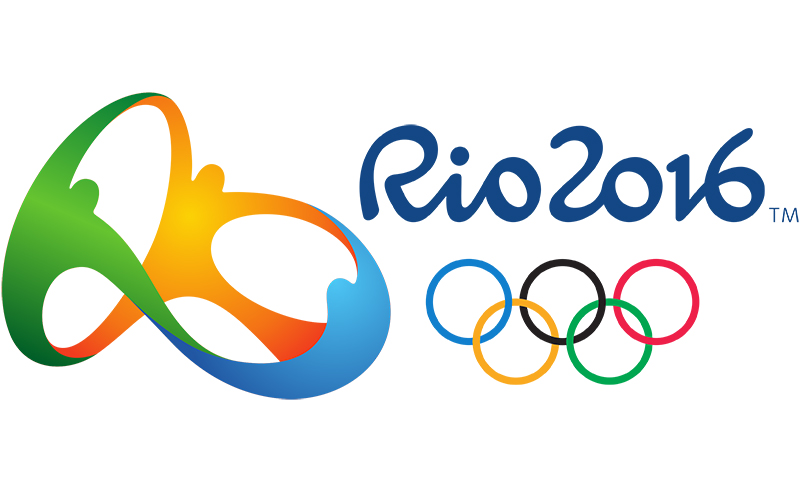STAMFORD, Conn. (AP) — Two people in a recording booth deep inside a Connecticut office park are helping millions of blind Americans feel part of the Olympics like never before.
For the first time in the U.S., NBC is airing the Olympics in prime time with additional narrators who simply report what’s happening on screen — a sort of closed captioning for the visually impaired. Most viewers won’t even know the additional narrators are there; to hear them, you need to turn on special cable-box or TV settings to activate their audio track. But their running blow-by-blow can open things up for the blind, who at best get an incomplete picture from traditional sportscasting that takes visuals for granted.
“I love the Olympics,” says Marlaina Lieberg, 66, who’s been blind since birth and has long bugged her sighted husband to describe the athletic events. “I’m so happy I’m going to be able to sit back, watch the Olympics like anybody else, know what’s going on, not have to imagine or wonder. That’s huge.”
DESCRIBING THE SUNSET
On a recent Wednesday, narrator Norma Jean Wick opens the Olympics broadcast in a neutral, almost robotic tone, saying “Golden orange sunset in Rio de Janeiro” as music swells over a shot of the city. “Night has fallen,” she continues, right after NBC’s Bob Costas intones, “Aaaand here we go.”
Wick and Jim Van Horne, both Canadian sports broadcasting veterans, devoted hours to studying the sports and NBC commentators’ speech patterns. They aim to wedge in short sentences or even a few words amid the often breathless announcing. At one point during a beach volleyball match, Wick mostly limits herself to reciting the score — otherwise invisible to those who can’t see — in-between points.
While they try not to talk over announcers, it happens. During a pause, Van Horne notes that U.S. player Kerri Walsh Jennings was waiting for the wind to die down to serve; the announcers started up again before he finished his sentence. Blind viewers say sometimes they can’t hear the NBC announcers in the crosstalk.
Finding the right words can be difficult, said Wick, who keeps stacks of notes in front of her. “When you say a spike, what does that mean? When you say a tumbling pass, well, what are they doing exactly?”
CAPTIONS FOR THE BLIND
While closed captioning for the deaf today is ubiquitous, most people who aren’t visually impaired have never heard of “audio description” or “video description,” as this sort of narration is formally known. It was developed for U.S. TV in the 1980s, and is now available for certain prime-time series and children’s shows on the major broadcast networks and a few cable channels. Descriptions are also available in many movie theaters, on Netflix and during some live theater.
For a long time, the visually impaired didn’t know how much they were missing from TV shows and movies, says Paul Schroeder, head of programs and policy at the American Foundation for the Blind. “If you’re trying to follow a program, you need to know the basis of what’s going on. The car chase, the gun shots, the subtle or not-so-subtle look across the room.”
But live TV events are much harder to narrate because there’s no script, and as a result narrated sports events remain rare in the U.S. All that raises the level of difficulty for NBC’s narrators.
The aim is to provide “what and how,” says Van Horne — “what an individual is wearing, the expression on their face, how did they fall, how did they twist the ankle.” Not only can the blind follow the action, they can also connect with the emotional upheavals that are as much a part of the Olympics as the sports.
Karen Gourgey, 68, the director of a center that trains blind people to use technology at Baruch College in New York, normally finds herself “bored” by the Olympics, “for obvious reasons,” she says. Now, though, she’s getting more specifics when medals are presented — “this one’s in tears, that one’s hugging, all the stupid stuff.” She’s learned that a gymnast used the whole floor during a tumbling routine and that swimmers perch on starting blocks before they dive into the pool.
“You can still get quite electrified,” she says.
HARD-TO-SEE CONTROLS
Narration for the blind isn’t always easy to find or operate on TV. Lori Scharff, a 41-year-old blind social worker on New York’s Long Island, can’t activate the setting herself because she’d have to navigate a TV-screen menu. She can’t just leave them running all the time, either, because they share a track with Spanish-language audio that kicks in when a show isn’t narrated for the blind (as most are not).
Advocates credit Comcast, which owns NBC, for producing a cable box that audibly recites menu options in a mechanical female voice. That lets the blind activate narration without help from someone who can see. All major cable and satellite TV providers are required to provide similar audio features by Dec. 20.
It can also be hard to know what shows gets narrated. Program guides on TV don’t always include that information, although many networks and blind advocacy groups track those shows online.
Copyright 2024 The Associated Press. All rights reserved. This material may not be published, broadcast, rewritten or redistributed.

